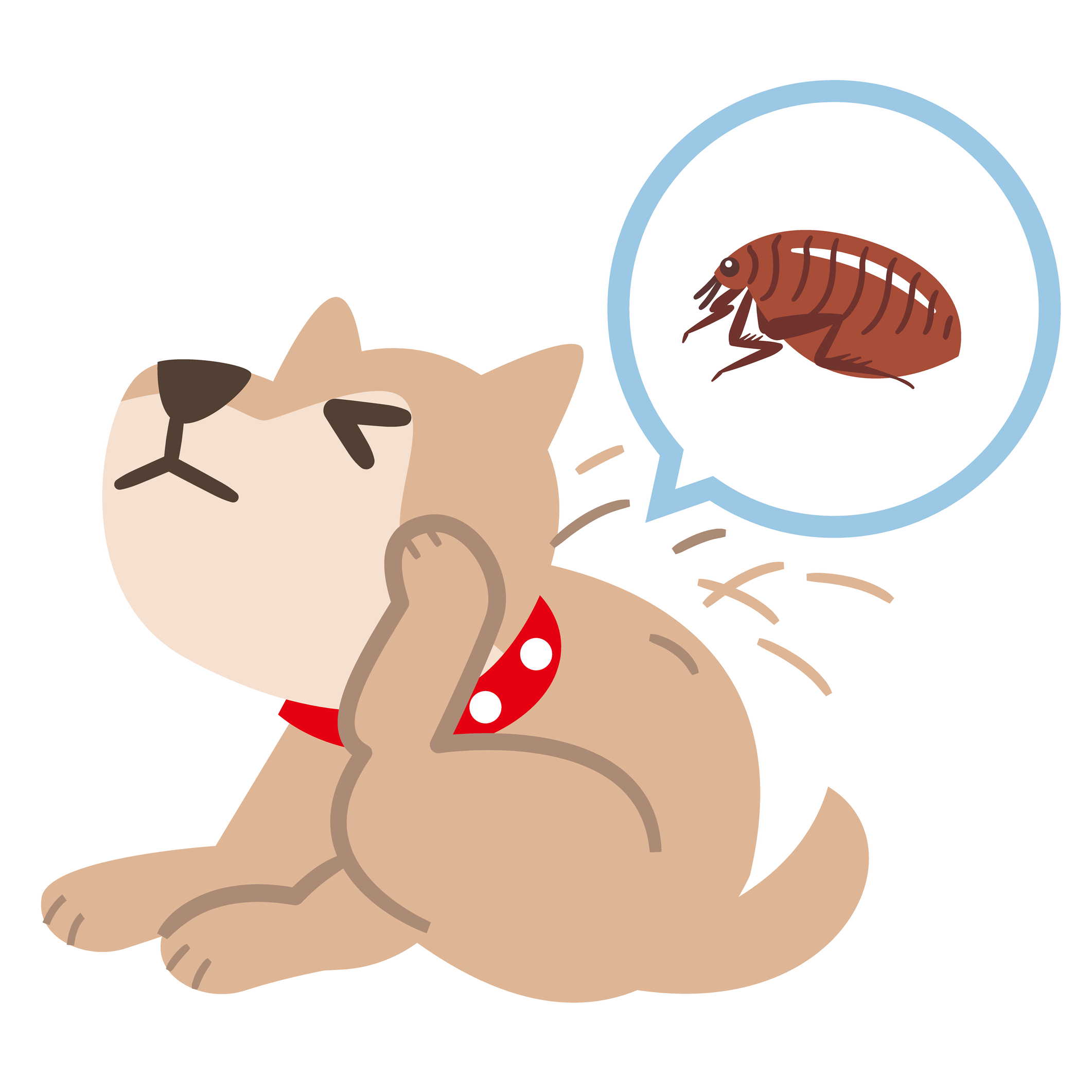
As the seasons change, so do the risks of fleas and ticks for our pets. These parasites thrive in warm and humid environments, making spring and summer the peak seasons for infestations. However, they can also pose a threat in fall and winter, particularly in milder climates. Protecting your pet from fleas and ticks is essential to prevent discomfort, allergic reactions, and serious health conditions such as Lyme disease and anemia.
Understanding the Risks
Fleas and ticks are more than just a nuisance; they can lead to significant health concerns for pets and their owners.
• Fleas: These tiny, fast-moving insects feed on your pet’s blood, leading to persistent itching, skin infections, and, in severe cases, anemia. Flea allergy dermatitis is a common reaction in pets, causing hair loss and extreme discomfort. Fleas can also carry tapeworms, which can infect pets if ingested.
• Ticks: These external parasites latch onto the skin and feed for long periods. Ticks are known carriers of serious diseases such as Lyme disease, Rocky Mountain spotted fever, and ehrlichiosis. Even a single tick bite can pose a risk, making prevention crucial.
A proactive approach to flea and tick control is the best way to keep your pet safe. Here are some essential steps to take throughout the year.
Year-Round Prevention
While flea and tick activity peaks in warmer months, many parasites can survive indoors or in milder climates year-round. Using a consistent flea and tick prevention program, as recommended by your veterinarian, is key to keeping these pests at bay.
Regular Veterinary Checkups
Every pet’s needs are different, and not all parasite prevention products work the same way. Consulting with our veterinarian at Community Pet Outreach ensures your pet receives the most effective and safe flea and tick protection based on their health, lifestyle, and environment. Our team can provide guidance on topical treatments, oral medications, and collars that offer long-lasting protection.
Frequent Grooming and Inspections
Regular brushing and bathing help you spot fleas or ticks early. Pay close attention to common hiding spots such as the neck, ears, underbelly, and between the toes. If you find a tick, remove it carefully with tweezers and contact your veterinarian for further advice.
Environmental Control
Keeping your pet’s living area clean is an essential part of flea and tick prevention. Vacuum carpets, furniture, and pet bedding frequently to remove eggs and larvae. Washing bedding in hot water and treating outdoor spaces with pet-safe pest control methods can also help reduce the risk of infestations.
Safe Outdoor Activities
Avoiding areas with tall grass, wooded environments, and known tick-infested zones can lower your pet’s exposure. When returning from outdoor adventures, always check your pet for any signs of fleas or ticks.
Schedule Your Pet’s Wellness Exam with Community Pet Outreach Today
Flea and tick prevention is a year-round commitment that requires vigilance and the right preventive measures. By staying proactive and consulting with our veterinarian, you can ensure that your pet remains happy, healthy, and free from parasites.
Contact Community Pet Outreach to schedule a wellness exam and discuss the best flea and tick prevention plan for your pet. Visit our office in Lewisville, Texas, or call (972) 848-8930 to book an appointment today.





